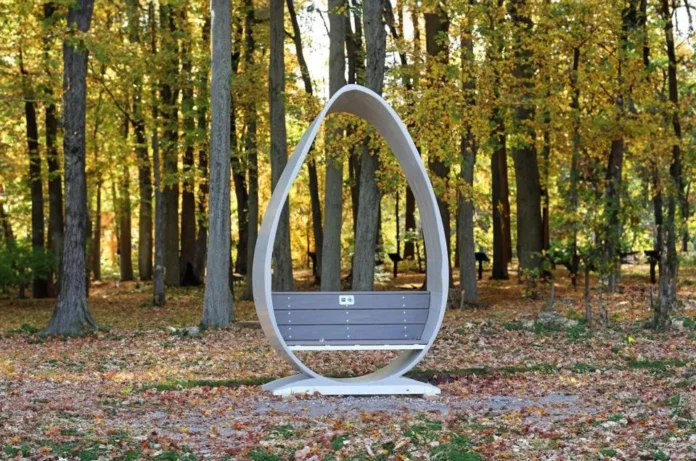“The founders of Canvus came up with the idea of converting retired wind turbine blades into furniture about three years ago. Throughout that time, Canvus has created and reviewed close to 150 different concepts for furniture.
“One of our key drivers when creating Canvus was to be able to manufacture at scale in order to make the biggest impact possible on the blade problem,” said Donahue. “To do that, we settled on nine products that are both epic and can be made at scale over and over again, serving the need for both function and art in communities across the U.S…
“Our furniture is not designed for someone’s backyard. It belongs in public spaces in communities, schools, and parks. It amplifies those spaces and inspires the people who sit and interact with our benches.
“By most estimates, there are 3,000–8,000 blades that are retired in the U.S. every year. Because of the tremendous financial support ($370 billion) being provided to the industry through the Inflation Reduction Act of 2022, that number is expected to be over 10,000 between 2025 and 2030.
“Our goal is to be able to upcycle as much of that material as possible,” said Donahue. “To do that, we need to increase the demand for our furniture…
“Products that are part of the Canvus PAR program are the most popular and well-received. PAR stands for ‘Primed and Ready’; not finished with epoxy paint but instead coated with a white primer. These products are painted by artists who either come to the Design Studio at the Canvus facility in Avon, Ohio, or they paint them when they are delivered to their community,” (Tim Clark, 2024).
During our first meeting with ODNR, the Canvus bench project was brought up by one of our partners as a project that merged sustainability and design. While it is by no means a revolutionary project, I think it’s an example of a well-done recycled “art” project. I say this for three main reasons.
First, the wind turbines used by Canvus are already meant to be outside so, unlike the Washed Ashore materials I mentioned in a previous article, there is not a great concern about material weathering and microplastic production. Second, the Canvus projects allow communities to customize their experience. Instead of creating something whose main value is aesthetic, Canvus is aesthetically pleasing AND it provides the social benefits of collaboration with other community members through painting and as a bench once installed. This final point is possibly the most important for Canvus’ long-term success.
For something to have long-term success, it has to integrate smoothly into user’s lives. This point stands for any design project but is especially relevant when the topic is something controversial, like sustainability. Whether the final design becomes a part of users’ lives as a novel experience, a daily occurrence, or something else, whatever project I end up proposing to ODNR needs to recognize this otherwise it will receive too much political pushback.
References
Canvus. (n.d.). A Canvus creation at Every Child’s Playground – Avon, OH
[Photograph]. https://www.forbes.com/sites/sap/2024/01/31/
how-wind-energy-gets-sustainable-boost-from-recycled-blades/
Clark, T. (2024, January 31). How wind energy gets sustainable boost from
recycled blades. Forbes. Retrieved September 9, 2024, from
https://www.forbes.com/sites/sap/2024/01/31/
how-wind-energy-gets-sustainable-boost-from-recycled-blades/




